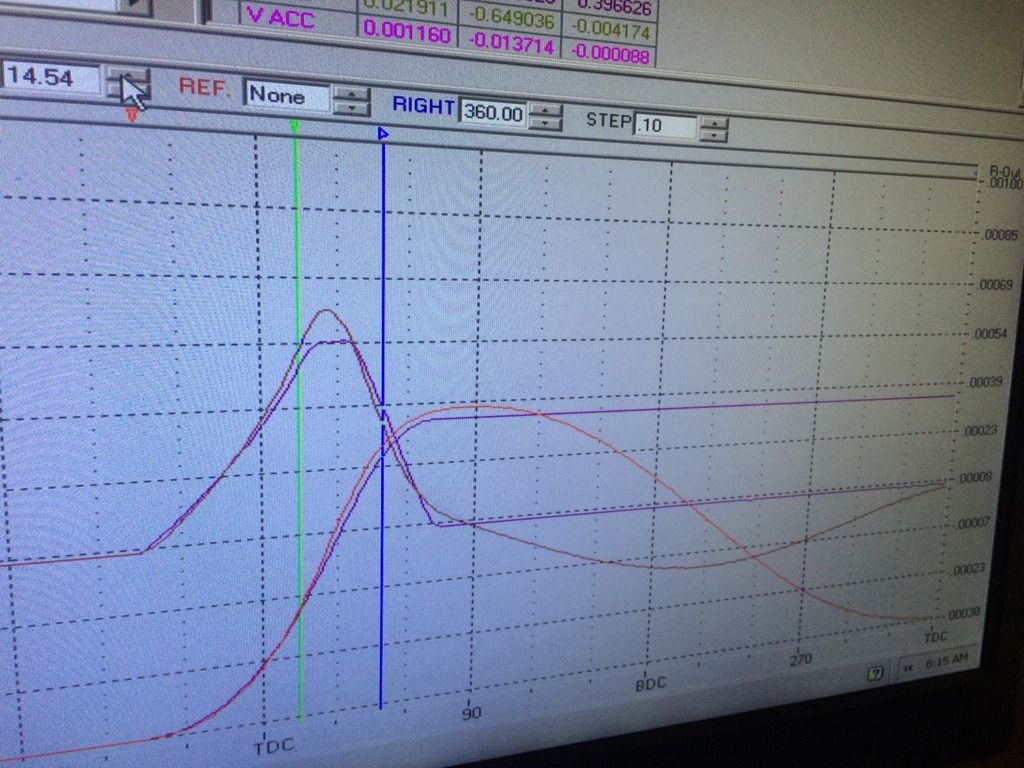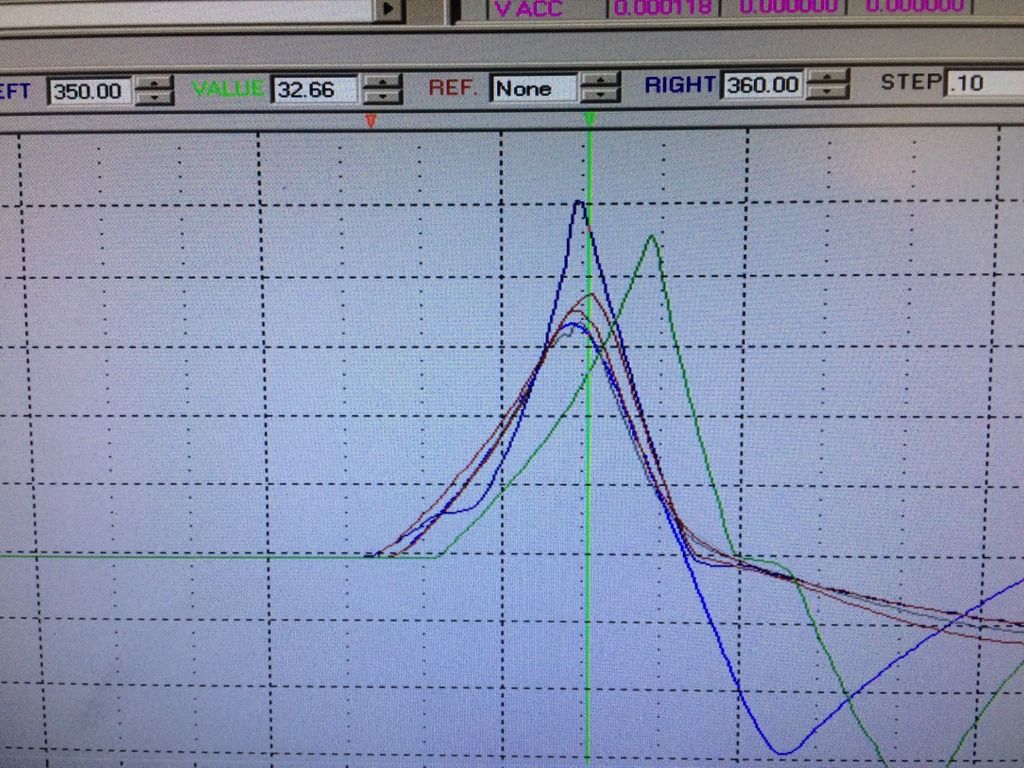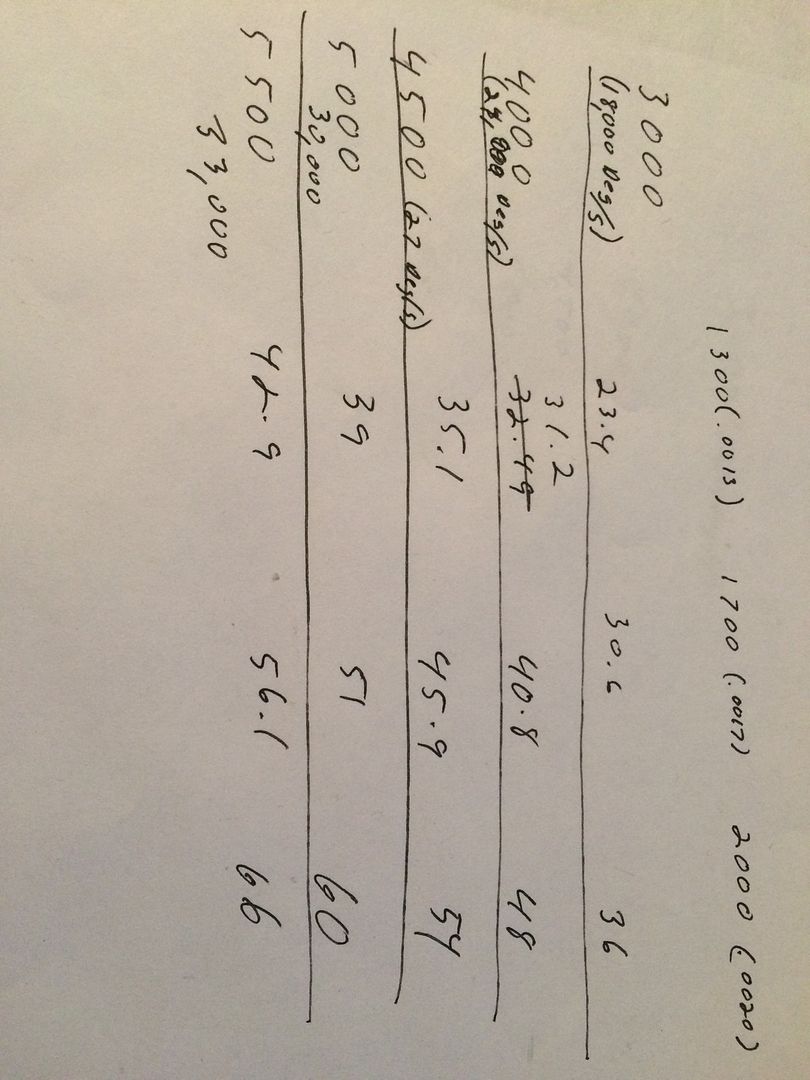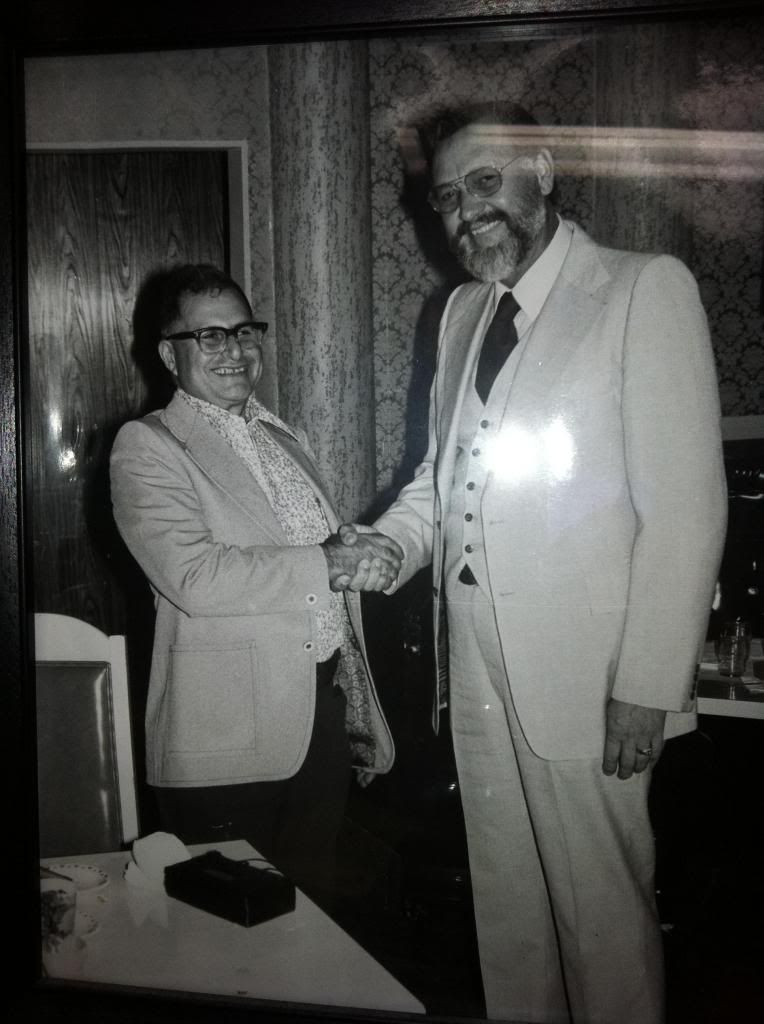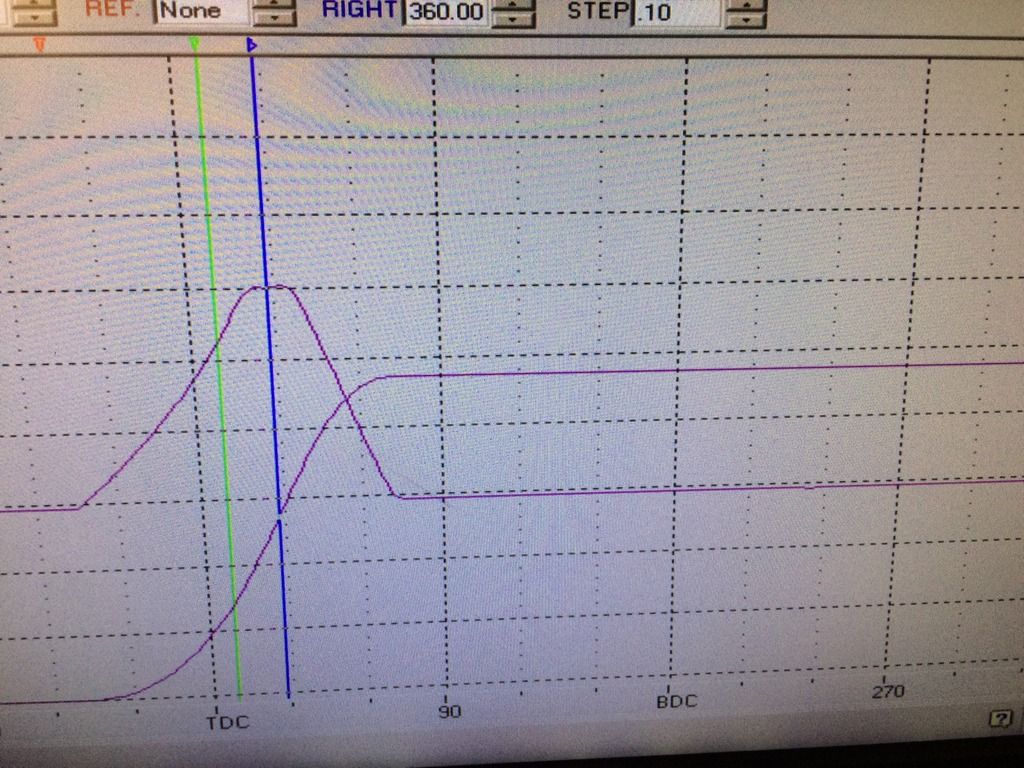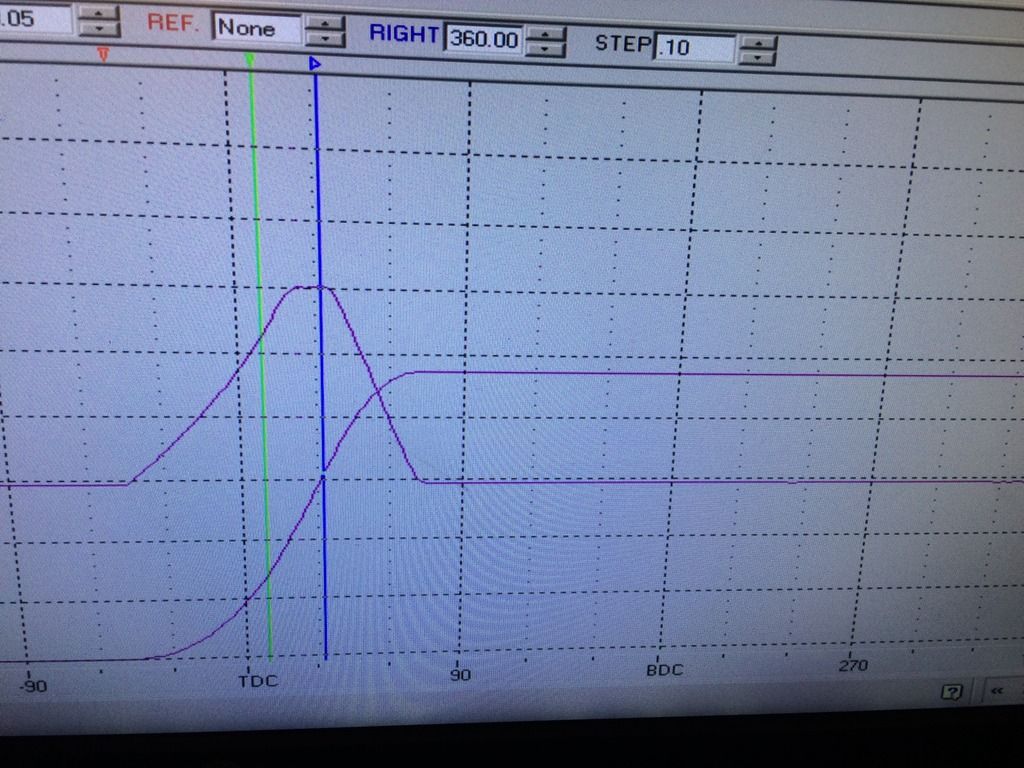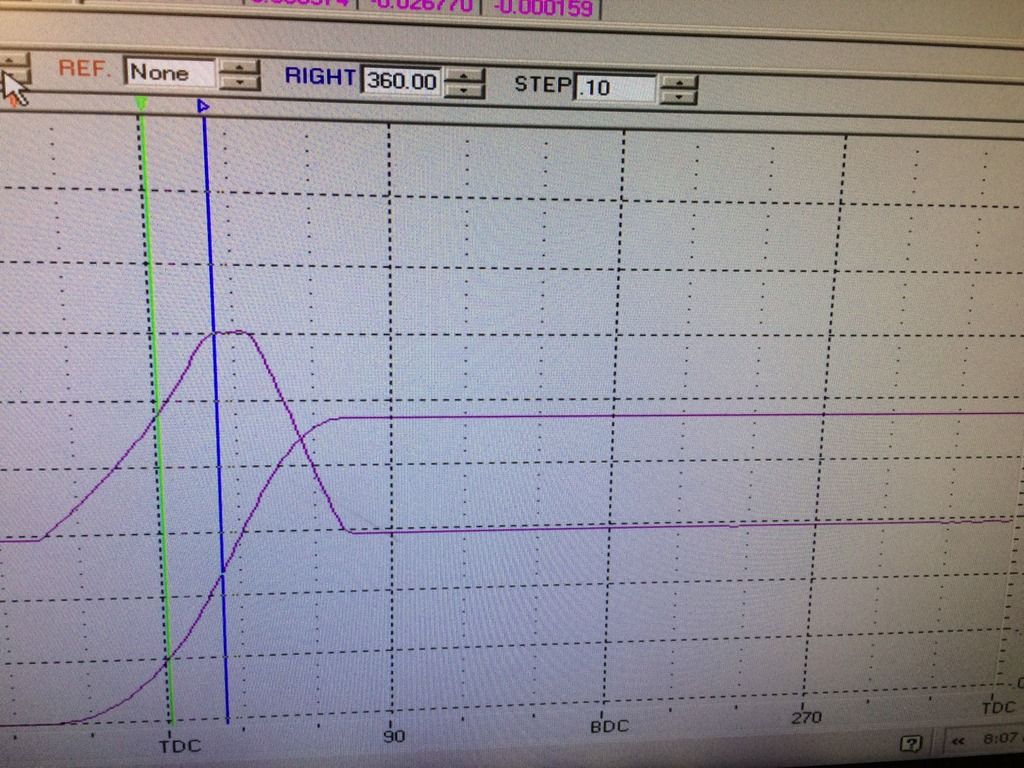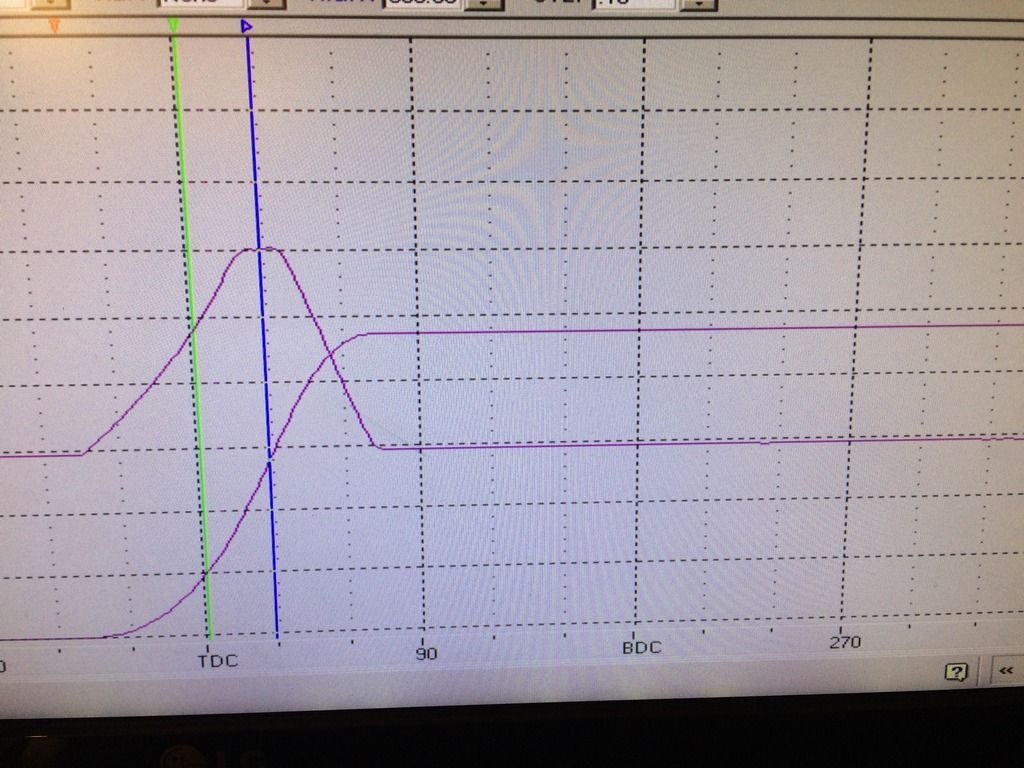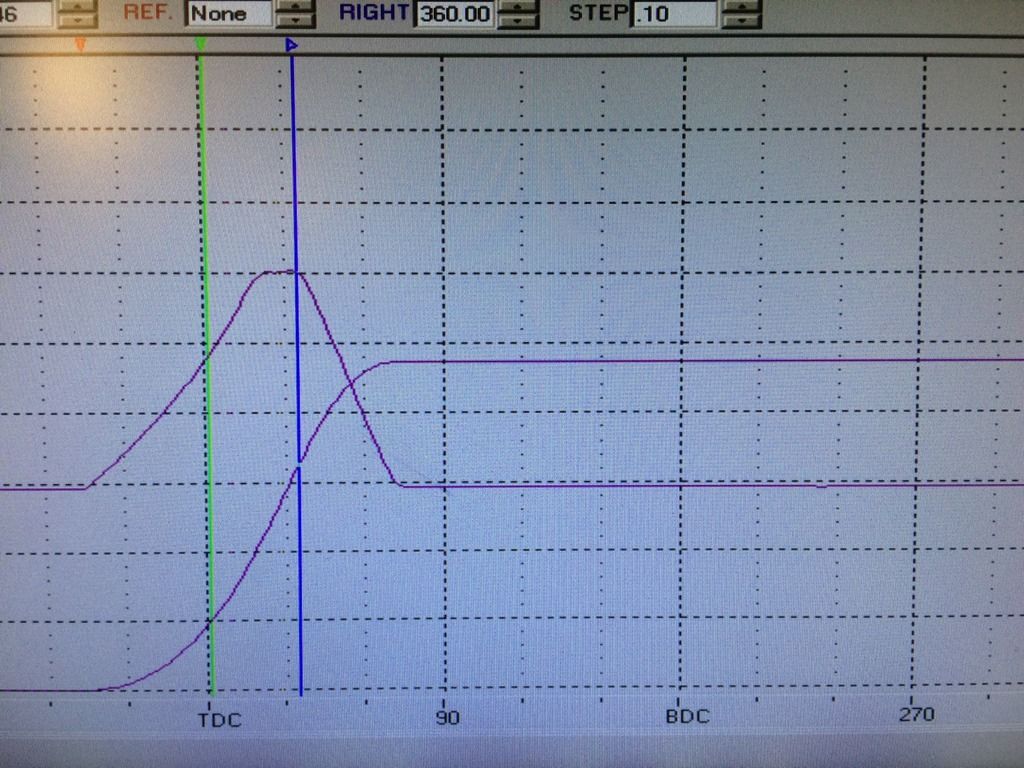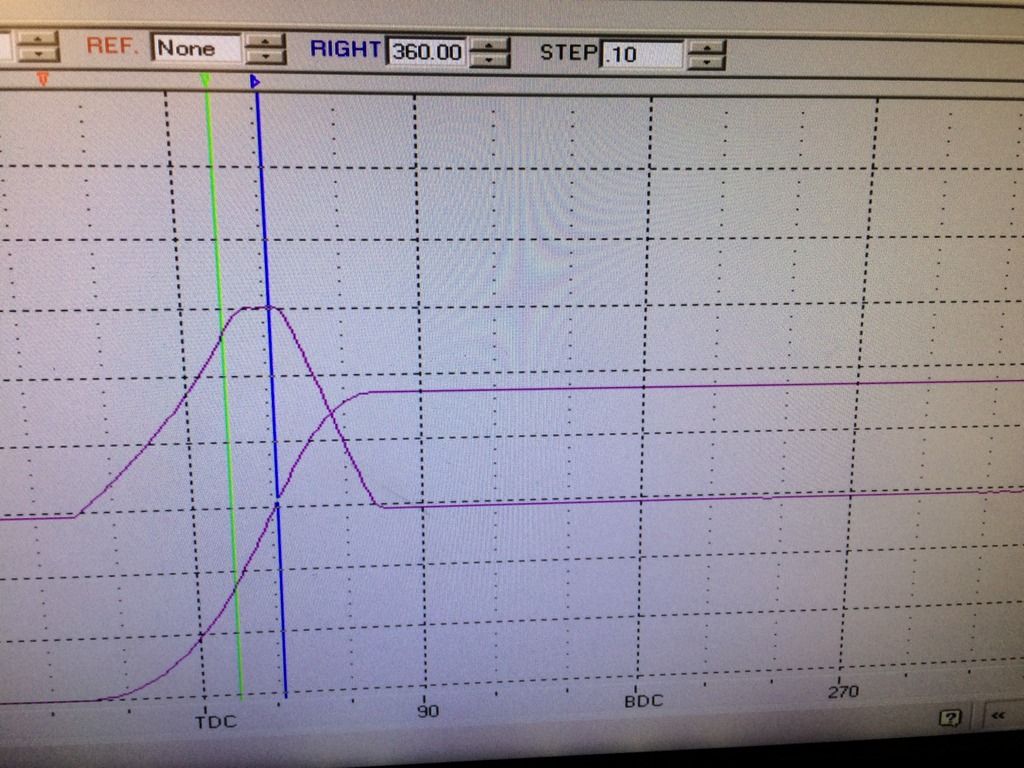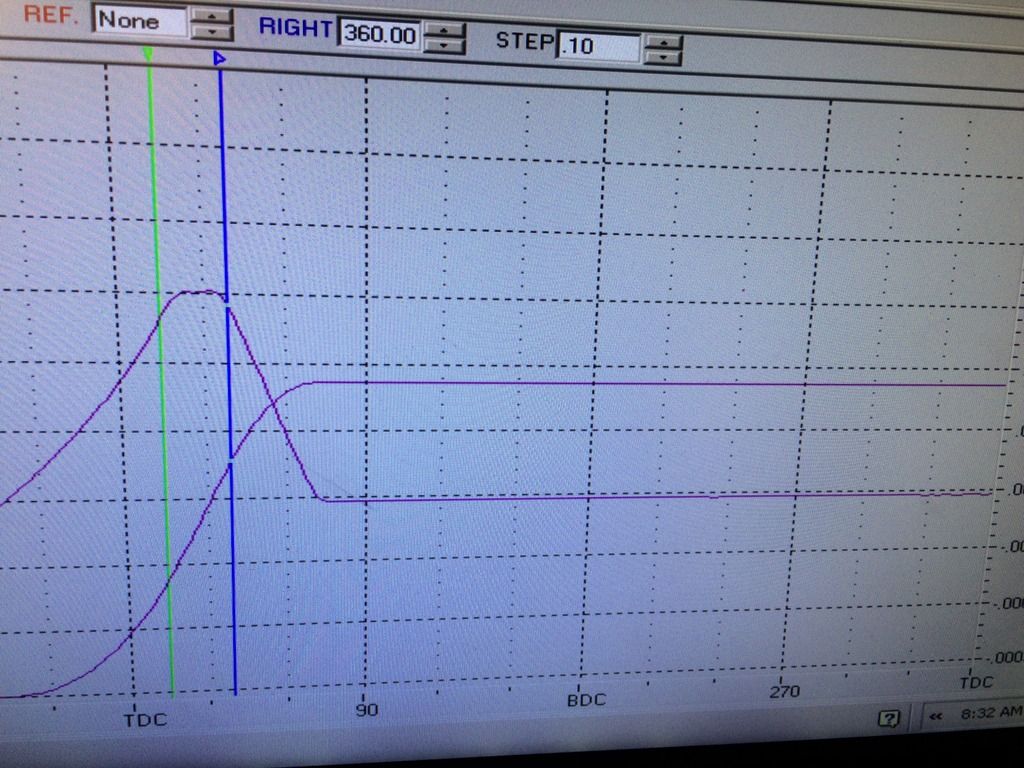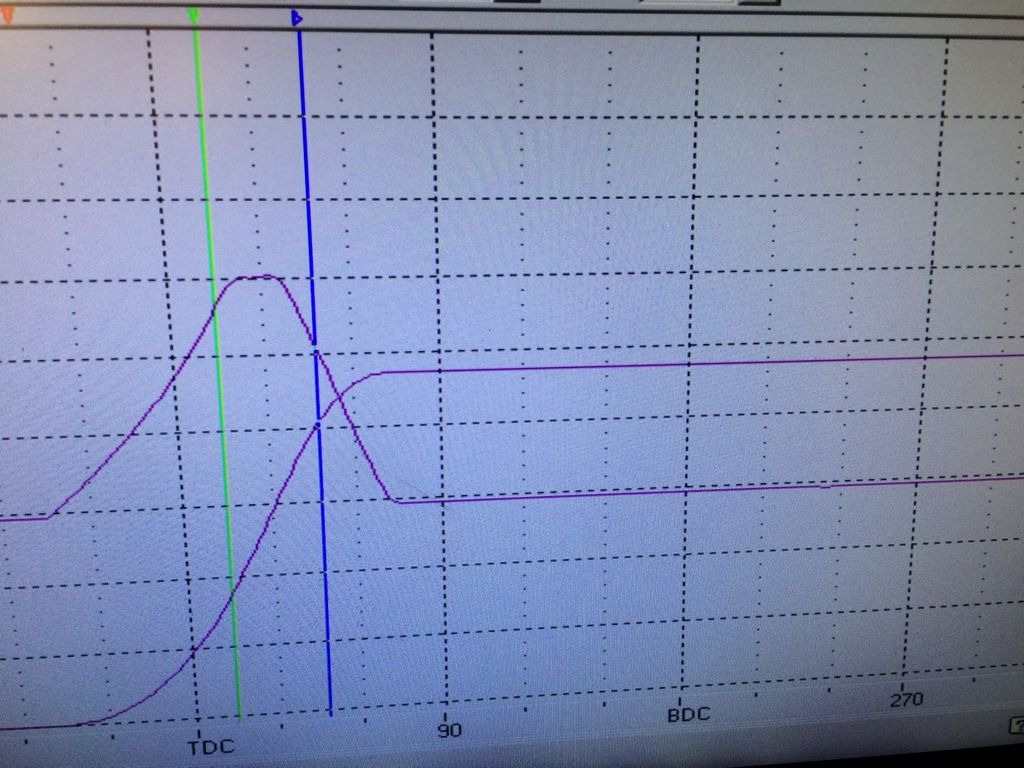Texashighways
Comp Diesel Sponsor
[ame="http://s240.photobucket.com/user/zacheryhamilton/media/Mobile%20Uploads/image_zpsvxtfyvo0.jpeg.html"]image_zpsvxtfyvo0.jpeg Photo by zacheryhamilton | Photobucket[/ame]
Above is a comparison of one of our profiles compared to a stock p-7100 cam. The bottom graph is a representation of lift vs crank angle and the graph above that is a representation of how fast the lifter is moving at any given lift. This velocity is measured in thousandths per degree. As I have time, I will go into cause and effect with different scenarios. Like "why do I not make more power when I slide my plate" "why do I need so much timing" " why does my pump builder need to know how many cc I am going to run before he builds my pump" and lastly" "why is it a bad Idea for Billary or Trump to get elected"
[ame="http://s240.photobucket.com/user/zacheryhamilton/media/Mobile%20Uploads/image_zpsvjfb0x1y.jpeg.html"]image_zpsvjfb0x1y.jpeg Photo by zacheryhamilton | Photobucket[/ame]
Above is chart that shows a few different p-7100 lobes with the p-8600 lobe shapes overlayed. Ever wondered why the p-8600 and larger frame pumps make more hp?
[ame="http://s240.photobucket.com/user/zacheryhamilton/media/Mobile%20Uploads/image_zpsamtqdocf.jpeg.html"]image_zpsamtqdocf.jpeg Photo by zacheryhamilton | Photobucket[/ame]
Above is a matrix that shows rpm and corresponding degrees per second on the left with microseconds of injection on the top axis and the corresponding length of injection factoring for each across the matrix. I apologize that it is sloppy, it is late and I am not going to type all of it. I hoping to show how both CR and mechanical injection differ and how they work to make better power at differing rpm. I will show how the length of injection compares in CR and p-pumps and how the CR has more of a Square wave injection even since pressure is constant and how LPC setting of the p-pump can make more or less power even though the injected quantity is the same.
I hoping to show how both CR and mechanical injection differ and how they work to make better power at differing rpm. I will show how the length of injection compares in CR and p-pumps and how the CR has more of a Square wave injection even since pressure is constant and how LPC setting of the p-pump can make more or less power even though the injected quantity is the same.
Above is a comparison of one of our profiles compared to a stock p-7100 cam. The bottom graph is a representation of lift vs crank angle and the graph above that is a representation of how fast the lifter is moving at any given lift. This velocity is measured in thousandths per degree. As I have time, I will go into cause and effect with different scenarios. Like "why do I not make more power when I slide my plate" "why do I need so much timing" " why does my pump builder need to know how many cc I am going to run before he builds my pump" and lastly" "why is it a bad Idea for Billary or Trump to get elected"
[ame="http://s240.photobucket.com/user/zacheryhamilton/media/Mobile%20Uploads/image_zpsvjfb0x1y.jpeg.html"]image_zpsvjfb0x1y.jpeg Photo by zacheryhamilton | Photobucket[/ame]
Above is chart that shows a few different p-7100 lobes with the p-8600 lobe shapes overlayed. Ever wondered why the p-8600 and larger frame pumps make more hp?
[ame="http://s240.photobucket.com/user/zacheryhamilton/media/Mobile%20Uploads/image_zpsamtqdocf.jpeg.html"]image_zpsamtqdocf.jpeg Photo by zacheryhamilton | Photobucket[/ame]
Above is a matrix that shows rpm and corresponding degrees per second on the left with microseconds of injection on the top axis and the corresponding length of injection factoring for each across the matrix. I apologize that it is sloppy, it is late and I am not going to type all of it.
Last edited:

